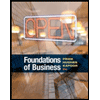OSH 3305, Industrial Ergonomics 2 UNIT x STUDY GUIDE Title a nuisance or an interruption to the employees’ daily routine that has otherwise remained the same for years. So, what is an OSH practitioner to do? Generally, there are three approaches to getting employees to comply. The first is to set up a safety and health program (including an ergonomics program) that documents policies and procedures that require compliance with safety rules. Such a program would require job hazard analysis, implementation of controls and work rules, training, and disciplinary procedures for noncompliance. A final step of this approach would require a periodic review of the program. This is a traditional compliance approach to safety in the workplace. Indeed, if an employer is cited by the Occupational Safety and Health Administration (OSHA) for a standard violation, and the employer chooses to argue that the employee was at fault for not following the company’s safety rules, the OSHA compliance officer will check to see if such a program exists at the facility or site and if employees are consistently disciplined for noncompliance. If all of these elements are not in place, then a citation may be forthcoming. It is one thing to have a written program on the shelf, but it is quite another to fully implement such a program. Of course, forcing employees to comply with rules does not necessarily ensure that employees will always go along with what is expected. The compliance model only ensures that employees will make an effort not to get caught. There is often nothing to prevent employees from removing safety glasses or not using the new lifting device when the safety supervisor has moved on to inspect other departments. The second approach for getting employees to comply with safety and health-related expectations uses an approach to get them to actually want to follow the rules by appealing to human psychology. One of the best ways to go about doing this is through the implementation of a safety and health management system that includes a high level of commitment by top managers along with a high degree of employee involvement in all phases of the safety program’s development, implementation, and continuous improvement processes. Such an approach obviously includes hazard recognition and control efforts, training, and program effectiveness evaluation. This second approach is consistent with what has come to be known as a safety and health management system, and many of OSHA’s ergonomics-related recommendations for specific industries utilize this approach (OSHA, n.d.). It is important for top managers to be highly committed to such an endeavor so that employees clearly recognize that safety and health are core values of the organization and that shortcuts should not be taken when it comes to worker safety and health. Employee involvement is also crucial to the success of such an approach. When people have an opportunity to provide input in how to best do their jobs safely, they are much more likely to follow through with implementing the controls. This is because the frontline employee typically understands their job better than anybody and, often, can offer the best solution to a given problem. Also, participation in the process results in employees buying into the solution because they are allowed to be a part of the solution rather than having a solution that may or may not work forced on them. Such systems are based on the total quality management (TQM) model, and standards have been developed by a number of organizations such as the American National Standards Institute, the International Standards Organization, and even OSHA to help employers implement such an approach in their organizations (Pardy & Andrews, 2010). Other psychologically based approaches involve behavior-based safety systems, which are often used by organizations with more sophisticated safety and health management systems that involve a behavior reward system for safe behaviors noted by an observer (often a coworker) (Pardy & Andrews, 2010). Of course, these latter approaches have books written about them, and it would be difficult to do them justice in a few short paragraphs, but you will certainly run across these approaches elsewhere in occupational safety and health programs. Suffice it to say that much attention has been paid to overcoming unsafe behavior in the workplace and that there are opportunities out there for the safety practitioner who is grappling with the issue of getting employees to follow the rules. We have come to the end of our final unit lesson. In this course, you have had an opportunity to learn a great deal about ergonomics, and hopefully you will be able to apply much of what has been learned to your workplace. In this last unit, you will also have an opportunity to apply key ergonomics-related concepts to the workplace scenario that you have dealt with. The thought is for you to become a person and professional that




 Management, Loose-Leaf VersionManagementISBN:9781305969308Author:Richard L. DaftPublisher:South-Western College Pub
Management, Loose-Leaf VersionManagementISBN:9781305969308Author:Richard L. DaftPublisher:South-Western College Pub Practical Management ScienceOperations ManagementISBN:9781337406659Author:WINSTON, Wayne L.Publisher:Cengage,
Practical Management ScienceOperations ManagementISBN:9781337406659Author:WINSTON, Wayne L.Publisher:Cengage, Foundations of Business (MindTap Course List)MarketingISBN:9781337386920Author:William M. Pride, Robert J. Hughes, Jack R. KapoorPublisher:Cengage Learning
Foundations of Business (MindTap Course List)MarketingISBN:9781337386920Author:William M. Pride, Robert J. Hughes, Jack R. KapoorPublisher:Cengage Learning Foundations of Business - Standalone book (MindTa...MarketingISBN:9781285193946Author:William M. Pride, Robert J. Hughes, Jack R. KapoorPublisher:Cengage Learning
Foundations of Business - Standalone book (MindTa...MarketingISBN:9781285193946Author:William M. Pride, Robert J. Hughes, Jack R. KapoorPublisher:Cengage Learning


